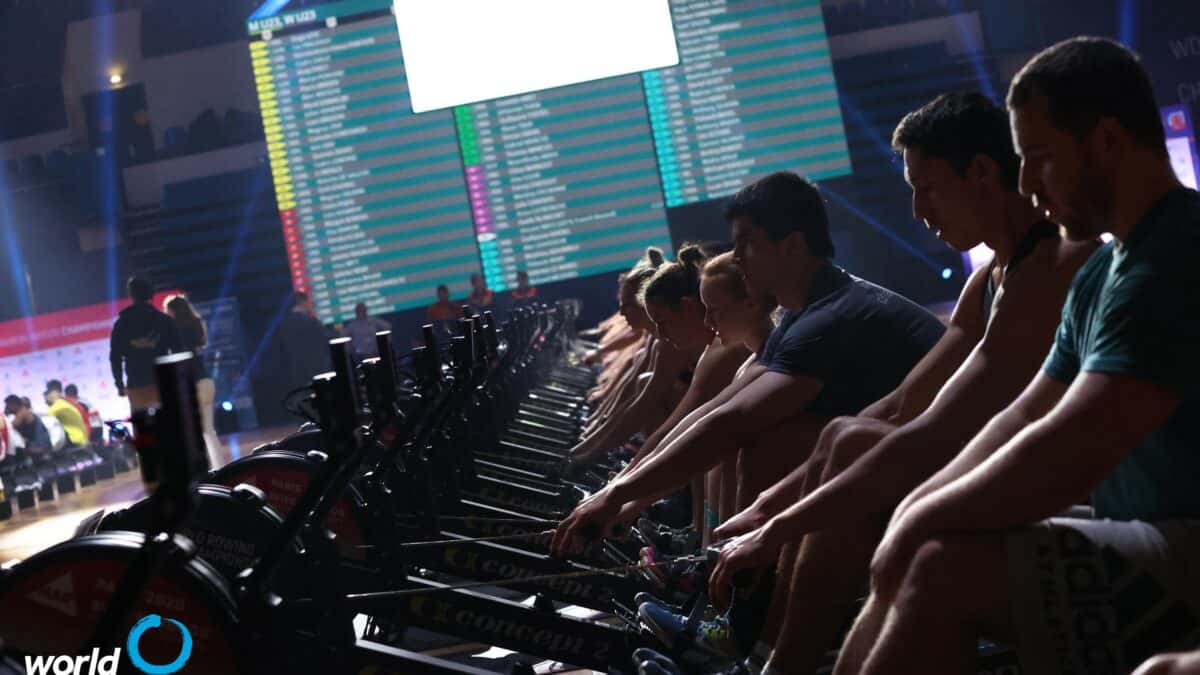
07 Apr 2020
Indoor rowing part 2 – ergo testing strategy
In part two of our series on ergometer testing, World Rowing spoke with one of the elite rowing’s top coaches about how rowers can achieve their personal best performance on the ergo.
Preparation the best strategy
Many rowers know the feeling of pushing too hard in the first half of an ergometer test – the proverbial ‘fly and die’. But what’s the best way to avoid running out of energy or ‘hitting the wall’ too soon?
“In my view an ergo time – good or bad – is, more often than not, determined in the last 500 metres,” says New Zealand women’s coach, Gary Hay. “If you fatigue in the last 500 metres, then all your hard work in the first 1500 metres will be lost. A good overall strategy is required.”
When it comes to an exact stroke-by-stroke strategy, however, Hay, who was named World Rowing’s Coach of the Year in 2019, isn’t sure there is one.
“I’ve seen rowers approach 2000 metre erg tests in different ways and many have been successful,” he says. “Either way, you need to plan your ergo test well.”
“Like a lot of things – if you prepare well then you’ll execute well,” continues Hay, who describes what has worked for his athletes in New Zealand’s elite women’s squad. “Determine what time you want to achieve; from there, work out the required splits/watts that you need to sit at. Patience is the absolute key particularly in the first 1000m of the test. No matter how good you may be feeling, sit on your target splits/watts particularly in the first 500 to 1000m.”
“Once you’re past the half way mark and you’re feeling good, then you can increase your watts or lower your splits.”
The final bit of ‘strategy’ Hay holds onto is a positive attitude. “I’ve seen rowers who have followed what I thought were ideal training programmes only to produce poor results and alternatively poor preparation [that has] produced good results,” he says. “In my view, mindset is a large part of the overall performance.”
What about technique?
As for technique, how you move during an ergo test is also going to vary from rower to rower, says Hay. “My view is that erg testing technique is very much a personal thing.”
“Rowers develop and adapt ergo technique that will achieve a good time,” he says, addressing a common concern by adding that testing “ergo technique doesn’t necessarily transfer into the boat.”
“Most of your ergo power is generated on the front half of the slide as opposed to the back half,” Hay explains. “Whereas in the rowing boat I’m personally an advocate of utilising the entire body throughout the rowing stroke.”
“Being strong off the front of the slide whilst keeping the fly wheel moving and not slowing down by spending too long off the back in my view will help with a better result.” That said, Hay stresses that there should be “no sudden movements or lunges at the front.”
“The technical fundamentals [of on-water rowing] still need to be there. Remember that:
“Length + Power + Rating = boat speed or good ergo time.”
It is important that rowers “keep the ergo flywheel continually spinning with a light and good connection off the front,” says Hay. “This will prevent a heavy feeling as the rower takes a stroke. I liken it to a pendulum – keep ticking it over so the flywheel is continually moving with ease.”
Keeping things “ticking along” is especially important for smaller rowers. “If you’re light in weight, fit and have good power-to-weight then my advice would be to keep the rating up. The more strokes you can get in (with power) then the better off you will be,” says Hay. “Likewise if you’re big and strong, then it’s working out an ideal rate that you can sit at while still being efficient and productive.”
Testing different distances
While Hay’s advice is aimed squarely at the 2000m ergo test, he also offers some insight into other common test distances.
“For the shorter distances (10 second and 1 minute) it’s not to think too much about technique but more about the application of power,” he says.
On the other hand, for longer distances like 5000 or 6000m, “the strategies are pretty much the same [as for 2000m],” says Hay. “Rating should be considered a bit more. Clearly the more strokes you can get in (with power) then the better time you will get. Some rowers are guilty of rating too low and therefore not getting a time that reflects their capability.”
When it comes to something like the hour ergo test, “consistency (splits/watts and rate) is key,” say Hay. “Stay patient, stick to the plan and when the moment is right, make a good push over the final stages.”
Click here for part one of World Rowing’s series on ergometer testing.

